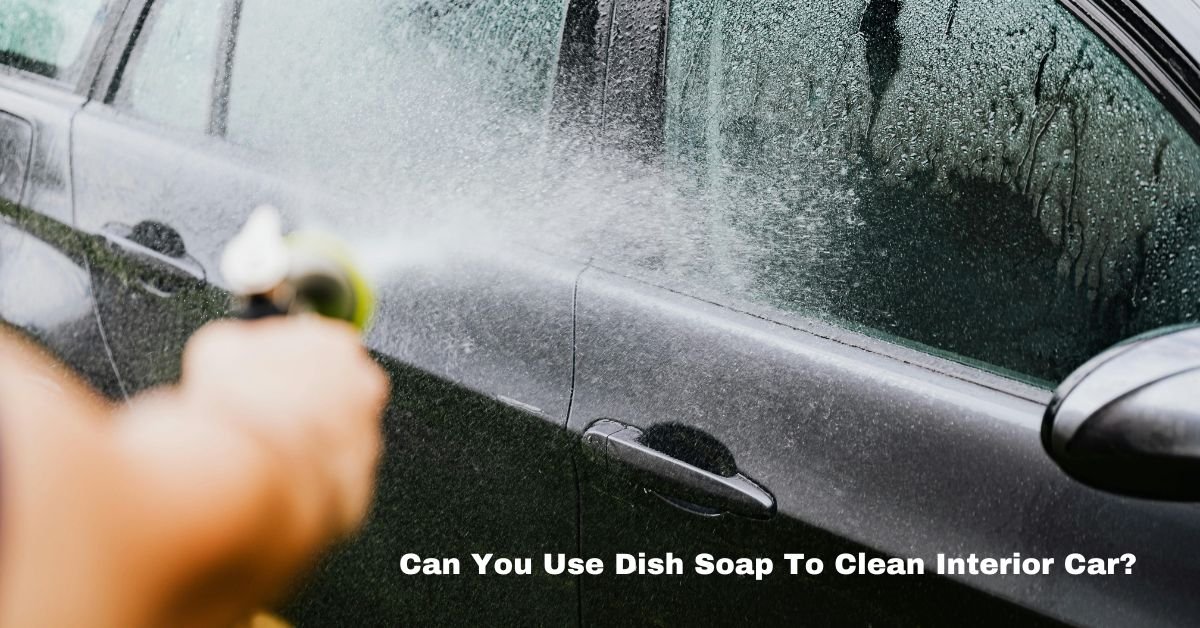When it comes to cleaning your car’s interior, many car owners wonder if they can use household products to get the job done efficiently without spending too much money on specialized cleaners. One such product that often gets thrown into the mix is dish soap. But can you use dish soap to clean your car’s interior? Let’s explore the pros and cons, the right way to use it, and alternatives to consider.
Can You Use Dish Soap to Clean Your Car Interior?
1. The Appeal of Dish Soap
Dish soap is a staple in many households, known for its ability to remove grease and grime from dishes. It’s designed to break down oils and stubborn food residues, so it’s no surprise that some people turn to it for cleaning other surfaces—like their car’s interior.
There are several reasons why dish soap might seem like a good option for cleaning your car:
- Affordable: Dish soap is inexpensive compared to many commercial car cleaning products.
- Effective: It’s excellent at cutting through grease and sticky residues.
- Readily Available: You likely have a bottle in your kitchen, so you won’t need to make an extra trip to the store.
However, before you go ahead and start scrubbing your car’s seats and dashboard with dish soap, there are some important considerations to keep in mind.
2. The Pros of Using Dish Soap on Your Car Interior
- Removes Tough Stains and Grease
Dish soap is formulated to tackle greasy messes, which can be helpful when cleaning things like the steering wheel, cup holders, and other surfaces that may accumulate oily residue over time. It can also help to break down sticky substances like food or drink spills. - Mild on Surfaces
When diluted properly, dish soap is relatively mild and won’t cause immediate damage to most surfaces in your car. It’s effective for cleaning plastics, vinyl, and certain fabric surfaces. - Quick and Convenient
If you’re looking for a quick solution to freshen up your car interior, dish soap can save you time and effort since it’s easy to apply and rinse off.
3. The Cons of Using Dish Soap on Your Car Interior
While dish soap can work for basic cleaning, there are a few potential issues to be aware of:
- Strips Protective Coatings
One major downside of dish soap is that it’s formulated to remove oils. This means it could strip away any protective coatings or wax that your car’s surfaces may have, leaving them vulnerable to dirt and damage in the future. For example, leather or vinyl seats often have a protective layer that dish soap can break down. - Harsh on Fabric and Upholstery
Dish soap can be a little too strong for some fabric seats or upholstery. Over time, it might cause the material to fade or deteriorate. Fabrics, especially delicate ones, could also absorb the soap residue, making the interior smell strange or feel sticky. - Not Specialized for Car Cleaning
While dish soap can clean, it wasn’t designed specifically for use on car interiors. Unlike dedicated car cleaners, it might not have the right pH balance or additional features like UV protection or stain prevention that you’d find in auto-specific cleaners. - Residue Build-Up
If you don’t rinse thoroughly enough, dish soap can leave behind a film or residue, which can attract more dirt or cause streaking on your car’s surfaces.
Must Read: Can You Drive A Car With A Blown Head Gasket?

4. How to Use Dish Soap on Car Interiors (Safely)
If you decide to use dish soap to clean your car, it’s essential to follow these steps to avoid damaging your vehicle:
- Dilute the Soap
Don’t use dish soap straight from the bottle. Mix a small amount (a few drops) of dish soap with a large amount of warm water. The goal is to create a soapy solution that’s gentle enough not to harm surfaces. - Spot Test
Before applying the solution to any surface, do a spot test on an inconspicuous area to ensure it won’t cause discoloration or damage. - Use a Soft Cloth or Sponge
Dampen a soft microfiber cloth or sponge with the soapy water, then gently wipe down the interior. Avoid scrubbing aggressively, especially on delicate materials like leather. - Rinse Thoroughly
Once you’ve wiped the surface, rinse the cloth or sponge with clean water and wipe the area again to remove any soap residue. This helps prevent streaks and build-up. - Dry Surfaces Immediately
After cleaning, use a dry microfiber towel to wipe down the surfaces to avoid watermarks or spots.
5. Alternatives to Dish Soap
While dish soap can be a viable option in a pinch, there are better, safer alternatives designed specifically for car interiors. Some of these include:
- All-Purpose Interior Cleaner: Designed for a variety of surfaces, these products usually have a balanced pH and won’t strip protective coatings or cause damage.
- Leather Cleaner & Conditioner: If you have leather seats or surfaces, using a dedicated leather cleaner is a safer bet. These products are formulated to clean without drying out or damaging leather.
- Upholstery Cleaner: For fabric seats, use a cleaner made specifically for fabric upholstery to ensure that you won’t cause fading or wear.
Conclusion
In conclusion, while dish soap can clean your car’s interior in a pinch, it isn’t the best or most recommended option for regular maintenance. It may remove grease and dirt effectively, but it can also strip protective coatings, damage delicate materials, and leave behind residue. For the best results, consider using a cleaner specifically designed for automotive interiors. Always remember to test any product on a small area first to avoid surprises, and keep your car looking fresh without compromising its longevity.
